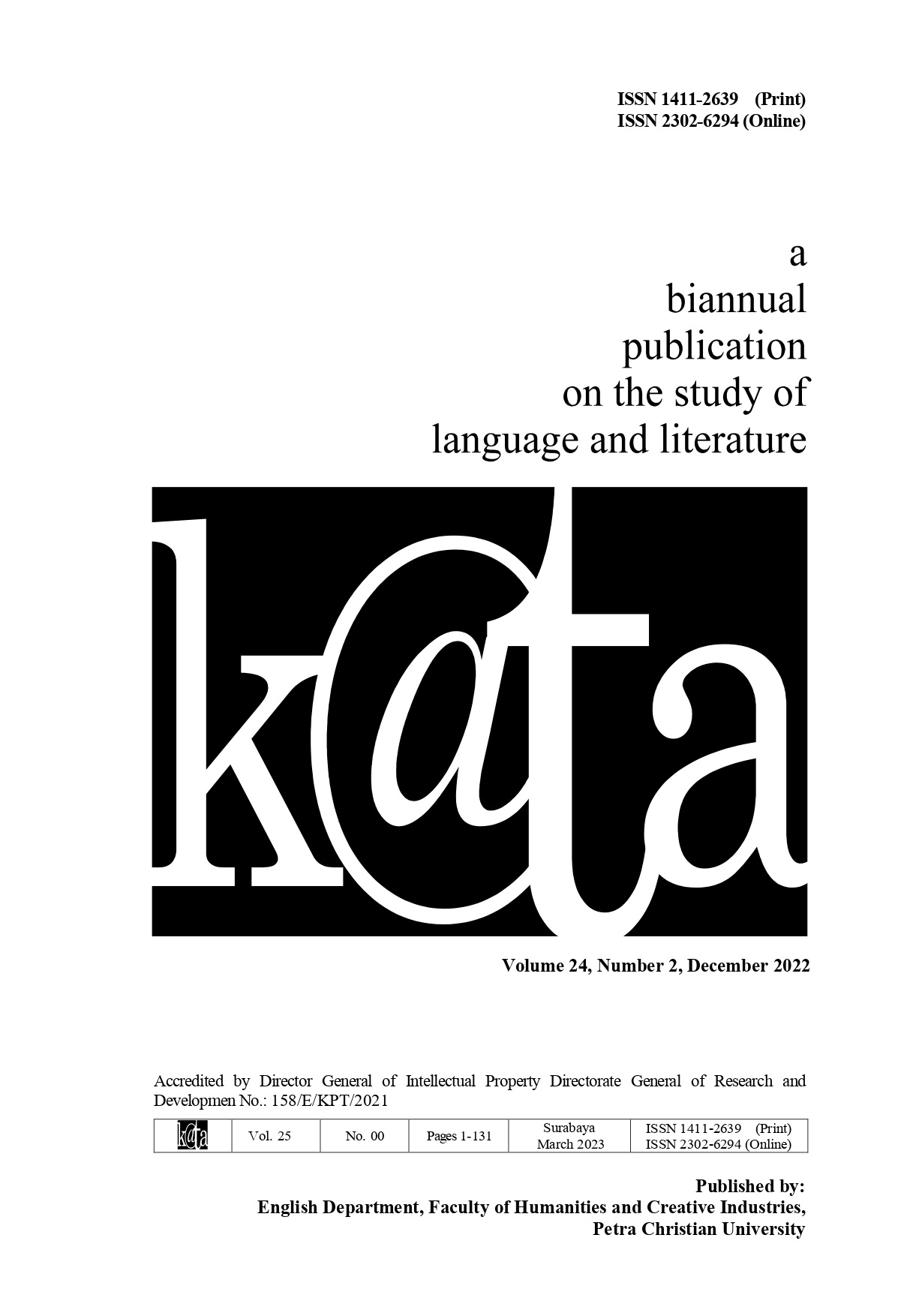Designing a Mobile Game Based on Augmented Reality Application for Learning Media
Abstract
Designing games for educational purposes needs to consider various aspects that help lead to the making of a good game. This study aims to describe users’ responses towards the potential of the game for blended learning, the design stages and the trial which encompass pre-design input taking, design stages, trial, and evaluation. The inputs from the pre-design stage have been the basis for the media design; the trial stage inputs from the prospective users and two experts provide feedback for the validity of media both in content and construct aspects. The research subjects involved 100 Junior high school students, 5 English language teachers, and 1 game design expert. The tools of data collection are questionnaire and semi-structured interview which were developed by the researchers. The intended subject for which this game is designed is reading comprehension and the study is planned to be conducted in approximately eight months. Both types of feedback were used to evaluate the readiness of the media for the real use for blended learning model. The results showed that the validity in content and construct aspects were both very good. The trial result also suggests that the game is considered a decent product, attractive and easy to use for independent learning. Thus, the final evaluation suggests that the media is readily usable for the real context of blended learning.
Downloads
References
Bacca, J., Baldiris, S., Fabregat, R., Graf, S., & Kinshuk. (2014). Augmented reality trends in education: A systematic review of research and applications. Educational Technology & Society, 17 (4), 133–149.
Balkun, M., M. (2011). Teaching with digital media: Widening the framework. Transformations: The Journal of Inclusive Scholarship and Pedagogy, 22(1), 15-24.
Barab, S., & Squire, K. (2004). Design-based research: Putting a stake in the ground. The Journal of the Learning Sciences, 13(1), 1-14.
Buckingham, D. (2007). Digital media literacies: Rethinking media education in the age of the internet. Research in Comparative and International Education, 2(1), 43-55.
Carmigniani, J., Furht, B., Anisetti, M., Ceravolo, P., Damiani, E., and Ivkovic, M. (2011). Augmented reality technologies, systems and applications. Multimedia Tools and Applications, 51(1), 341-377. https://doi.org/10.1007/s11042-010-0660-6
Cengizhan, S. (2007). Project based and computer aided instructional designs: The effect on the academic achievement and permanence of the students with dependent, independent, and collaborative learning styles. Turkish Journal of Educational Sciences, 5(3), 377-403.
Comport, A. I., et. al. (2006). Real-time markerless tracking for augmented reality: The virtual visual serving framework. IEEE Transactions on Visualization and Computer Graphics, 12(4). 10.1109/TVCG.2006.78
Cuendet, S., Bonnard, Q., Do-Lenh, S., & Dillenbourg, P. (2013). Designing augmented reality for the classroom. Computers & Education, 68(0), 557-569. doi: http://dx.doi.org/10.1016/j.compedu.2013.02.015
Dale, E. (1969). Audio-visual methods in teaching. (3rd ed.) Rinehart & Winston.
Hoadley, C. M. (2004). Methodological alignment in design-based research. Educational Psychologist, 39(4), 203-212.
Hobbs, R. (2011). The state of media literacy: A response to Potter. Journal of Broadcasting and Electronic Media. 55 (3), 1-12
Jadeja, A., Mehta, R., and Sharma, D. (2016). New era of teaching learning: 3D marker based augmented reality. International Journal of Information Sciences and Techniques (IJIST), 6(1/2)
Johnson, L., Levine, A., Smith, R., & Stone, S. (2010). Simple augmented reality. In Johnson, L., Levine, A., Smith, R., & Stone, S., The 2010 horizon report, (pp. 21-24). The New Media Consortium.
Journet, D. (2007). Inventing myself in multimodality: Encouraging senior faculty to use digital media. Computers and Composition, 24(2), 107–120. http://doi.org/10.1016/j.compcom.2007.03.001
Kiryakova, G., Angelova, N., and Yordanova, L. (2018). The potential of augmented reality to transform education into smart education. TEM Journal, 7(3), 556-565.
Koster, R. (2004). A theory of fun for game design. Paraglyph Press, Inc
Lai, G., Calandra, B., & Ma, Y. (2009). Leveraging the potential of design-based research to improve reflective thinking in an educational assessment system. International Journal of Technology in Teaching and Learning, 5(2), 119-137.
Lee, K., (2012). Augmented Reality in Education and Training. TechTrend, 56(2).
Lindgren, R., Tschol, M., lWang, S., and Johnson, E. (2016). Enhancing learning and engagement through embodied interaction within a mixed reality simulation. Computers & Education, 95, 174-187.
McKenney, S. E. (2001). Computer-based support for science education materials developers in Africa: Exploring potentials. (Doctoral dissertation, University of Twente). Research Gate. https://www. researchgate.net/publication/242407274_Computer-based_support_for_science_education_mate-ials_developers_in_Africa_Exploring_potentials
Nincarean, D., Alia, M. B., Halim, N. D. A., & Rahman, M. H. A. (2013). Mobile augmented reality: The potential for education. Procedia-Social and Behavioral Sciences, 103(0), 657-664. doi: http://dx.doi.org/10.1016/j.sbspro.2013.10.385
Oblinger, D.G. (2004). The Next generation of edu-cational engagement. Journal of Interactive Media in Education, 2004(1), p.Art. 10. DOI: http://doi.org/10.5334/2004-8-oblinger
Plomp, T. (2007). Educational design research: An introduction. In T. Plomp & N. Nieveen (Eds.), An introduction to educational design research. SLO.
Radu, I., Zheng, R., Golubski, G., and Guzdial, M. (2010). Augmented reality in the future of education, ACM 978-1-60558-930-5/10/04, Georgia Institute of Technology-Atlanta, USA, 2010
Roesner, F., Denning, T., Newell, B. C., Kohno, T., & Calo, R. (2014). Augmented reality: hard problems of law and policy. Paper presented at the Proceedings of the 2014 ACM International Joint Conference on Pervasive and Ubiquitous Computing: Adjunct Publication, Seattle, Washington.
Siltanen, S., (2012). Theory and applications of marker-based augmented reality. VTT Science 3. VTT.
Van den Akker, J. (1999). Principles and methods of development research. In J. van den Akker, R. Branch, K. Gustafson, N. Nieveen, & T. Plomp (Eds.), Design approaches and tools in education and training (pp. 1-15). Kluwer Academic Publishers.
Vogt, F.P.A. & Shingles, L.J. (2013). Augmented reality in astrophysics. Astrophysics and Space Science [online], 347(1), 47-60. https://pdfs.semanticscholar.org/e064/14f637bad6170ee644 d9059339b053177fbb.pdf [Accessed 12 Aug. 2019].
Wu, H., Lee, S., Chang, H., & Liang, J., (2013). Current status, opportunities and challenges of augmented reality in education. Computers & Education, 62, 41–49.
Zhou, F., Duh, H. & Billinghurst, M. (2008). Trends in augmented reality tracking interaction and display: A review of ten years of ISMAR. ISMAR 2008. Cambridge.

This work is licensed under a Creative Commons Attribution 4.0 International License.
This work is licensed under a Creative Commons Attribution License


















